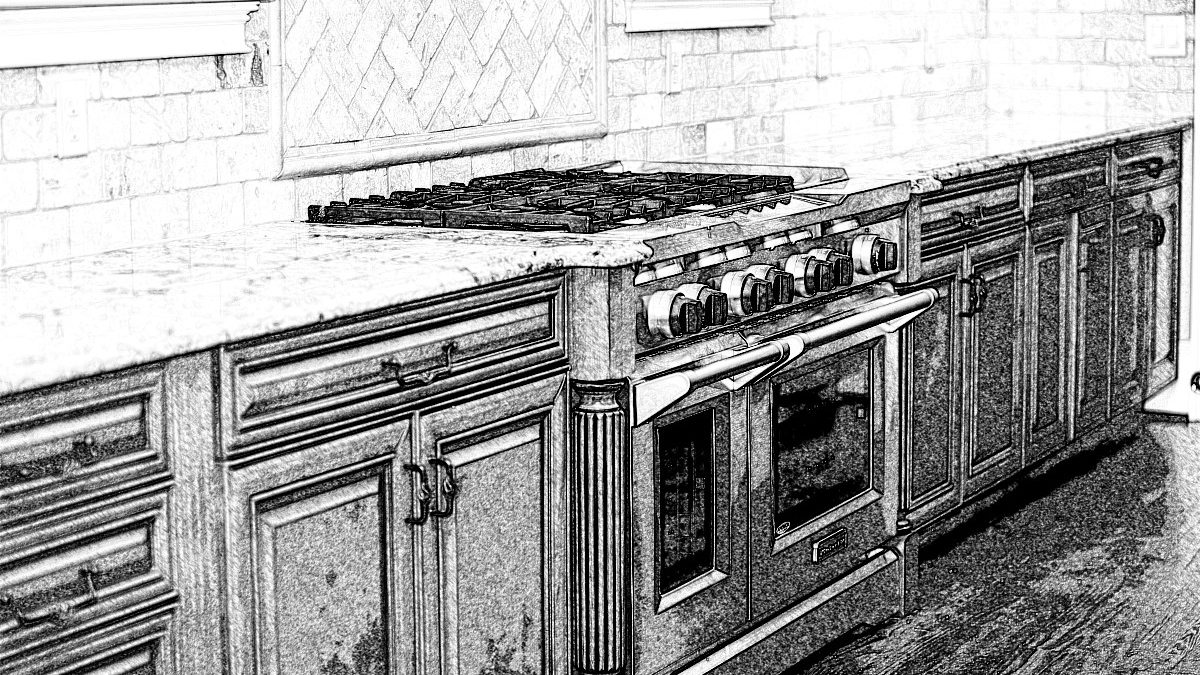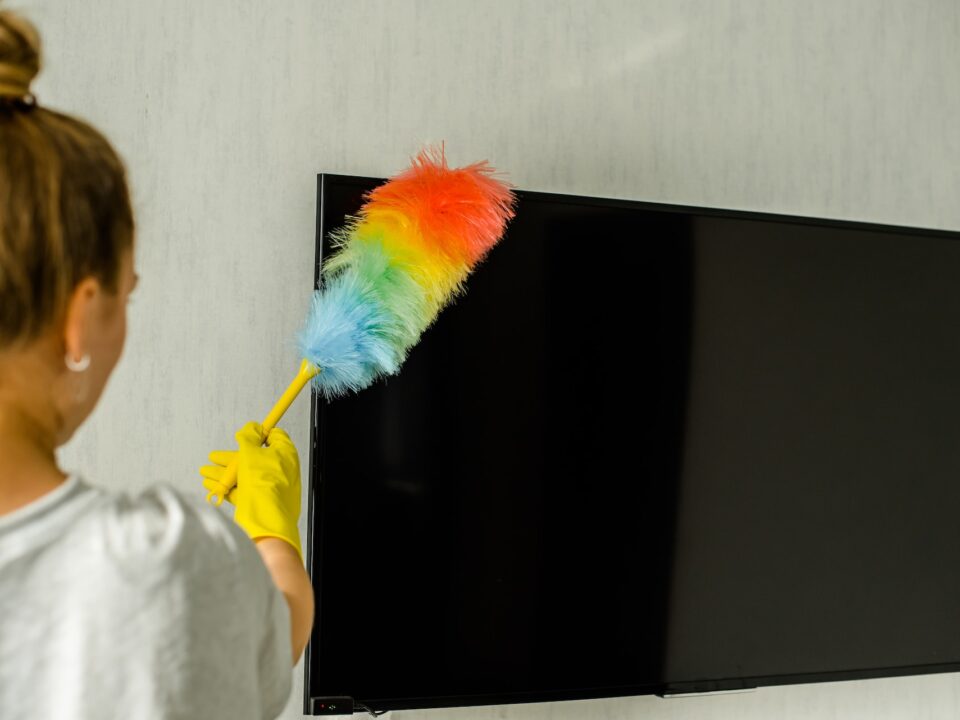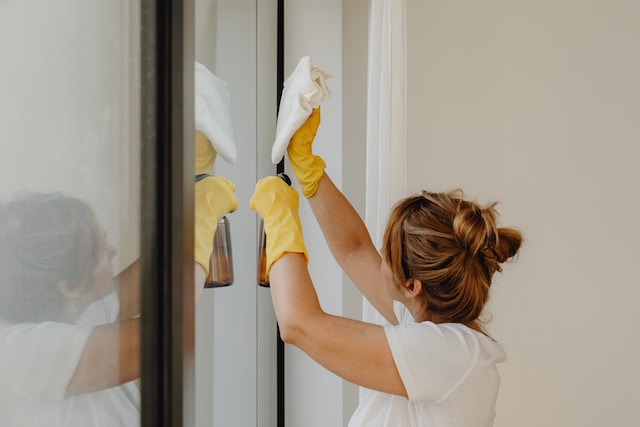The Smart Way to Clean a Stove Top

How to Keep Ceramic Tiles Clean
June 29, 2018
Two Simple Methods to Remove Mould from Walls and Ceilings
July 15, 2018Your stovetop can become impressively dirty. If you take a close look at it after using it for a few months or even a couple of weeks, you might be surprised at how much gunk has managed to find its way onto the stovetop and cling to the burners and the flat surface. This may be an accumulation of oil, food and other particles that simply lands on your stovetop as you are cooking. The more you cook in your home, the dirtier your stove top will become, and it’s a testament to your dedication to cooking if your stovetop becomes very dirty in a short amount of time. Be sure to try these tips out with ceramic tile cleaning too!
To clean that impressive mess can take an impressive amount off work… unless you know a smart way to get it all clean. There is a right way and wrong way to clean every surface in your house, and we want to show you a few shortcuts to cleaning the stovetop that you may not know about. We’re not looking to cut any corners here, but we want to demonstrate how quickly and efficiently you can get this troublesome surface clean. You might not even realize how fast and painless this could be.
Prep Work
You’ll want to start by preparing the surface for cleaning. You need to remove the grates to make it easier to clean everything else. Those grates will probably be packed with grease and burnt pieces of food, and they will be a job on their own to clean. You can simply put them in some hot soapy water to soak or spray them down with degreaser or a homemade cleaning solution. If you want to make your own cleaning solution for the grates, we suggest using baking soda and hydrogen peroxide mixed into a paste. You can just rub that on your grates and allow it to sit as you are cleaning everything else.
Once you get those grates out of the way and ensure that they are soaking or absorbing some cleaning solution, you can wipe down the stove top. We won’t start out with anything too complex here. Just take a wet or dry rag and wipe all the loose food particles on your stovetop. You need to get this out of the way to more effectively clean the surface of your stovetop.
Cleaning the Stovetop
The bulk of your work will be getting all the grease spots off the stovetop. Grease will spatter onto this surface as you cook. You can’t really do much to control that, other than to use less oil when you cook and try to cook as much as you can without using oil. It is healthier for you and will result in a cleaner stovetop. You can also clean as you go, wiping down the stovetop after each cooking session, when the grease will be easiest to remove. This will save you from having to do so much cleaning later on.
Let’s get back to actually cleaning the stovetop, though. You can use the same baking soda and hydrogen peroxide paste for getting it clean. There are lots of other homemade cleaning solutions that work pretty well too, and you can look those up and see if one of those formulas works better for you, depending on what you have on hand and what you want to try.
Whatever you use to clean the surface, be sure to apply it evenly and fully across the surface of the stovetop. Once it is applied, you can let it sit there for a few minutes. It should not take more than five or ten minutes for the cleaning solution to soak into the grease and caked on food.
Once it has, then you can wipe it all clean with some paper towels or clean rag.
If you are using a rag, you can simply wash it out with hot water to get rid of the removed grease and food and then continue wiping until the stovetop is all clean.
If you runs into some food that’s extra tough, you may want to use a butter knife or similar semi-sharp instrument to scrape at it, but your cleaning solution should get rid of most of the stuff that’s stuck to your stovetop.
After you get the stovetop clean, you can deal with the grates. These may be clean already after soaking in hot, soapy water or cleaning solution. But you can simply wipe them down in the same way you did the stovetop, if there is still stuff stuck to them. Once they are clean, be sure to dry everything down before you use the stovetop for cooking.
Cleaning Glass Stovetops
Glass stovetops are a bit different from conventional stovetops. There are no burners to remove and everything is one, flat surface. You can use a glass cleaner to deal with the grease spots and other accumulations, but you generally want to use a specialized cleaning solution that is designed to work on this particular surface. The glass cleaner can work okay, but it is not as effective as using baking soda and vinegar. You can spray the vinegar using a spray bottle. Be sure to cover the entire surface of your stovetop. Then proceed to cover the surface with a thin layer of baking soda. The two chemicals will react in a way that loosens grime and grease from your stovetop.
Let that solution sit there for a few minutes, and then wipe it all clean with a wet rag or some paper towels. This whole process should take no longer than 10 minutes, and when you are finished, the glass stovetop should look spotless.
That’s a lot less work than you have to put in for the regular stovetop, and that’s why people love glass stovetops so much. There is simply a lot less work to do to get them clean or keep them clean.
Be sure to clean your stovetop regularly, no matter what kind you have. The more often you clean, the less intensive your cleaning session will have to be and the nicer your stovetop will look. However, when your stovetop gets really bad and you need a way to get rid of tough spots and grime, then use the cleaning methods we have detailed here to make the cleaning process go quickly and smoothly.
If you’re looking for professional cleaning for your oven then check out our oven cleaning service to book us.




